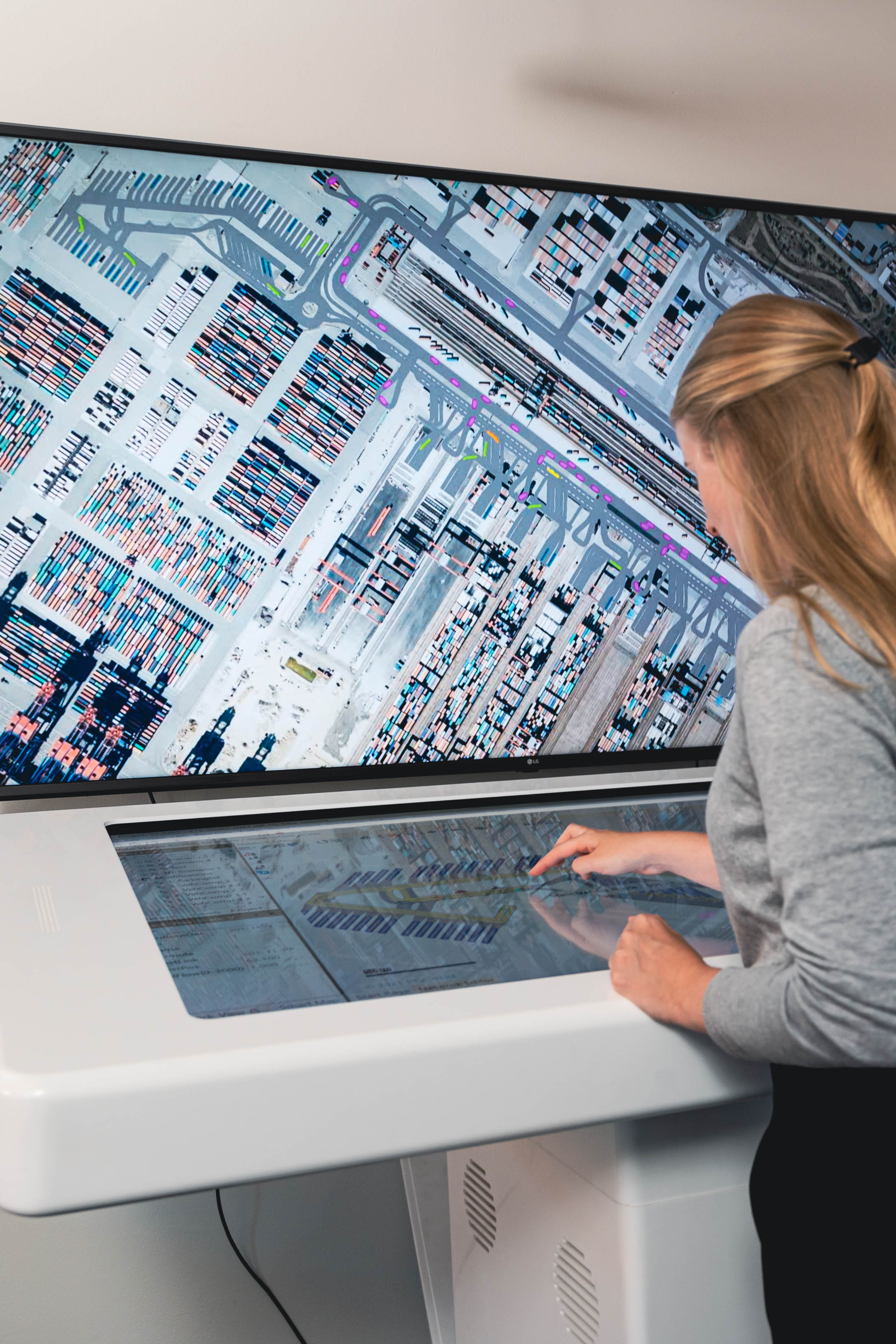SALT – Simulation Automated Truck in Terminals
Automated driving in logistics has been a much-discussed topic for years. Port logistics in particular has a pioneering role in research and piloting due to restricted operational areas, low process complexity and the immanent homogeneity of traffic structures. Since the interrelationship of traffic and process potentials has only been slightly investigated, the Fraunhofer CML and Fraunhofer IML initiated an internal study. The core question here is to what extent highly and fully automated trucks influence port and terminal operations.
For this purpose, a microscopic traffic simulation was created for a reference port, which could be used to investigate different degrees of automation as well as different degrees of its penetration. Finally, eight scenarios were analysed in which both factors were increased incrementally - from complete manual operation to full automation.
The results show that automated driving in port areas has a high potential. Although the added value in the traffic environment is rather low (without continuous car-to-anything (C2X) communication and synchronisation of the road users), the process-related aspects have a great influence. Using the example of the reference port, a lead time optimisation of up to 30 % could be determined. This increase in efficiency can significantly leverage the value creation level of transport companies and port operators. However, this is only possible through a holistic view of infrastructure, processes and participation of supply chain partners.
Contact person:
Katrin Scholz, Project Center Traffic, Mobility and environment, Fraunhofer IML
Sina Willrodt, Port and terminal development, Fraunhofer CML
 Fraunhofer Institute for Material Flow and Logistics IML
Fraunhofer Institute for Material Flow and Logistics IML